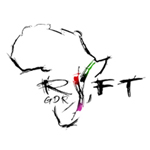

Xavier BOËS
Researcher
INEE, UMR 7194 INHP,
Musée de l’Homme, Paris
xavier.boes[at]inrap.fr
I am a limnogeologist based at the Institut National de Recherches Archéologiques Preventives (National Institute of Preventative Archaeological Research, or INRAP) in Lyon, France. Prior to joining the WTAP in 2010 and refocusing my work on the East African Rift System (EARS) I worked at Lake Baikal in central Asia.
Limnogeology is the study of sediments formed by inland waters (e.g. lakes, ponds, rivers, wetlands), and in West Turkana my specific research interest is the sedimentary cyclicity and temporal evolution of lake deposits, which I use to reconstruct past climatic, tectonic, and environmental changes and how they influenced hominin evolution during the Plio-Pleistocene. My approach involves identifying sequences of ancient lake sediments where they are exposed in the Nachukui Formation and performing detailed sediment analyses to determine the processes and contexts (deep, shallow, endorheic etc) that led to their deposition. As the largest endorheic water body in a desert on earth, Lake Turkana has undergone remarkable changes in size, shape, and hydrology over time, and has played a key role in affecting the environments and locations that were available for hominins to exploit.


